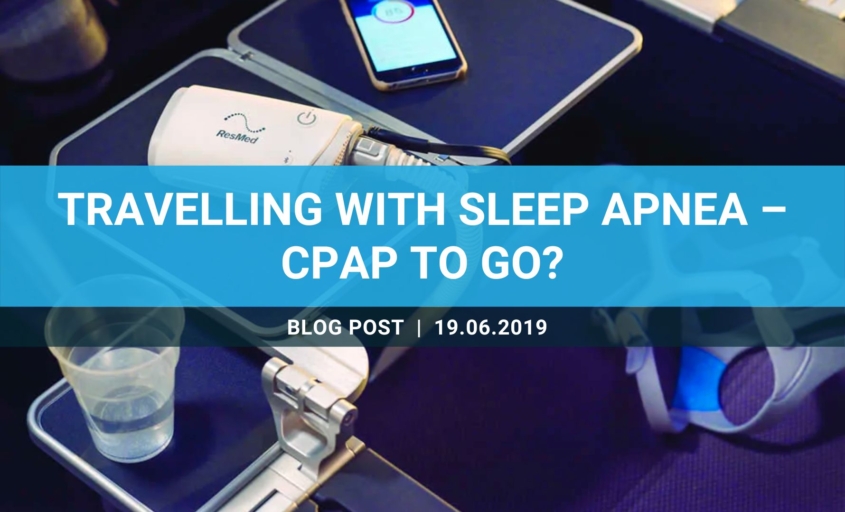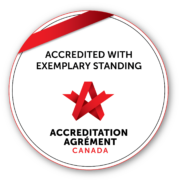Travelling with Sleep Apnea – CPAP to Go?
So you’ve come to embrace your CPAP machine and the restfulness it helps you enjoy, along with all the other benefits you’re gaining by treating your sleep apnea, but you’ve got vacation plans lined up for the summer.
Too bad you can’t take a vacation from your sleep apnea, right? A lot of CPAP machines are indeed relatively portable, but once you involve air travel with baggage limits, or maybe a camping trip where the amount of gear you carry is scrutinized down to the last wooden match, things get trickier. Fortunately, there are solutions, and Apnea Health has ways to help.
- Travel CPAP Machines
- Size Matters!
- Functionality
- Shop Travel CPAP Bundles
- Drawbacks
- What about a camping trip?
- Conclusion
Travel CPAP Machines
The team at Apnea Health set me up to test a couple of new, very small CPAP machines for their performance and fitness for travel. Up for the test were the Respironics DreamStation Go by Philips, and the AirMini from ResMed. Both performed admirably and lived up to their claims to the name, “Travel CPAP.” There were some differences of course…
Size matters!
Since the name of the game is portability, size really does matter.
The DreamStation Go, a sleek 6” x 6” little box without the added humidifier accessory, weighs in at only 1.86 lbs. It screams portability, though it’s so diminutive a better word might be whispers. The addition of the optional humidifying unit doubles the length (it remains easily detachable for travel) and adds barely any weight so altogether it still weighs under 3 lbs., hose, mask and all.
The ResMed AirMini is in a league of its own for size – this thing is tiny. By stripping down the humidifier (more on that shortly), the screen, knobs and everything else but two touch spots for power and Bluetooth, ResMed has managed to create a full-function travel CPAP that’s about the size of a butter dish and weighs only 2/3 of a pound. It comes with a travel pouch but could just as easily slide into a purse or the side pocket of a laptop bag or backpack.

Functionality
These two manufacturers have managed to squeeze all the features that you’ve come to expect from your regular CPAP into a couple of much smaller packages.
The touchscreen on the DreamStation Go is intuitively easy to navigate both for setup and feedback, as is the DreamMapper app that provides reports, user manuals and handy informational videos on your phone or tablet. The Micro-flexible tubing is remarkably light and narrow but works with any mask, and the humidifier is designed to be happy using regular tap water so you don’t have to worry about lugging or finding distilled water while you’re on the road. This machine works and feels like a regular CPAP, just in a smaller package: in spite of its dimensions it can perform as a full-time machine with the added bonus of impressive travel ability.
As for the AirMini, absolutely everything is controlled through the app – you set it up on your phone or tablet and then push a button (or just put on your mask and breathe to auto-start) and begin therapy. For humidification, ResMed has done away with traditional water tanks and opted instead for a system that uses a rather ingenious pod with a porous filter built into the hose that captures and re-uses heat and moisture as you breathe. The filter “pucks” come in two grades for more or less humidity, or you can forgo them entirely if you don’t feel the need (depending on local conditions, time of year, etc.). The filters don’t require cleaning but do need to be replaced once a month.

Shop travel CPAP bundles
Drawbacks
Truly it is difficult to find a drawback with the DreamStation go, other than that it’s not as small as the AirMini. When you add the humidifier it does get larger, but the whole thing is still much smaller than a regular CPAP machine. As a stand-alone without the water tank it would travel even lighter, and I did test it out that way (on a warm night in the Montreal area) and had no complaints at all.
The AirMini is the reigning champion for small size. One unfortunate drawback it that the “HumidX” waterless humidification system, while brilliant and highly effective, is positioned on the hose just below the mask, and expels a constant stream of air. It’s surely something you’d get used to, and for many it wouldn’t be disruptive at all, but to me it felt like one of the kids snuck into my room to blow on my face through a juice-box straw for a prank. The machine is ever so slightly louder, and it is actually limited to working with a few specific ResMed masks, but those minor complaints are far outweighed by the convenience of its impressively small size.
What about that camping trip?
You might be wondering about powering your CPAP on that camping trip I mentioned, if you’re headed for the woods with no access to an electrical outlet.
Not to worry, there are also batteries available with multiple charging options, so you can take your CPAP to sleep in a tent, on a plane, the passenger seat in the car, you name it. You can use a battery with a travel CPAP or your own existing machine, or you can use a backup battery in case of a power outage at home.
Conclusion
Overall, both the ResMed AirMini and the Respironics DreamStation Go are impressive, full-functioning travel CPAP devices, and either would make travelling far easier and more convenient. Imagine the freedom of going on vacation with a CPAP that takes up no more room in your bag than a beach novel!
The DreamStation Go works exactly like a full-sized machine in a tiny package. And the AirMini, while recommended solely as a travel CPAP and not meant for full-time use, is the winner if you’re looking for ultra small size in a second machine.
Apnea Health has both models available along with informed staff to help find the best solution for you.
Don’t travel enough to feel the extra cost of a travel CPAP is justified? Apnea Health still has you covered – they also offer travel devices for rent so you can rest easy on your next trip.

















